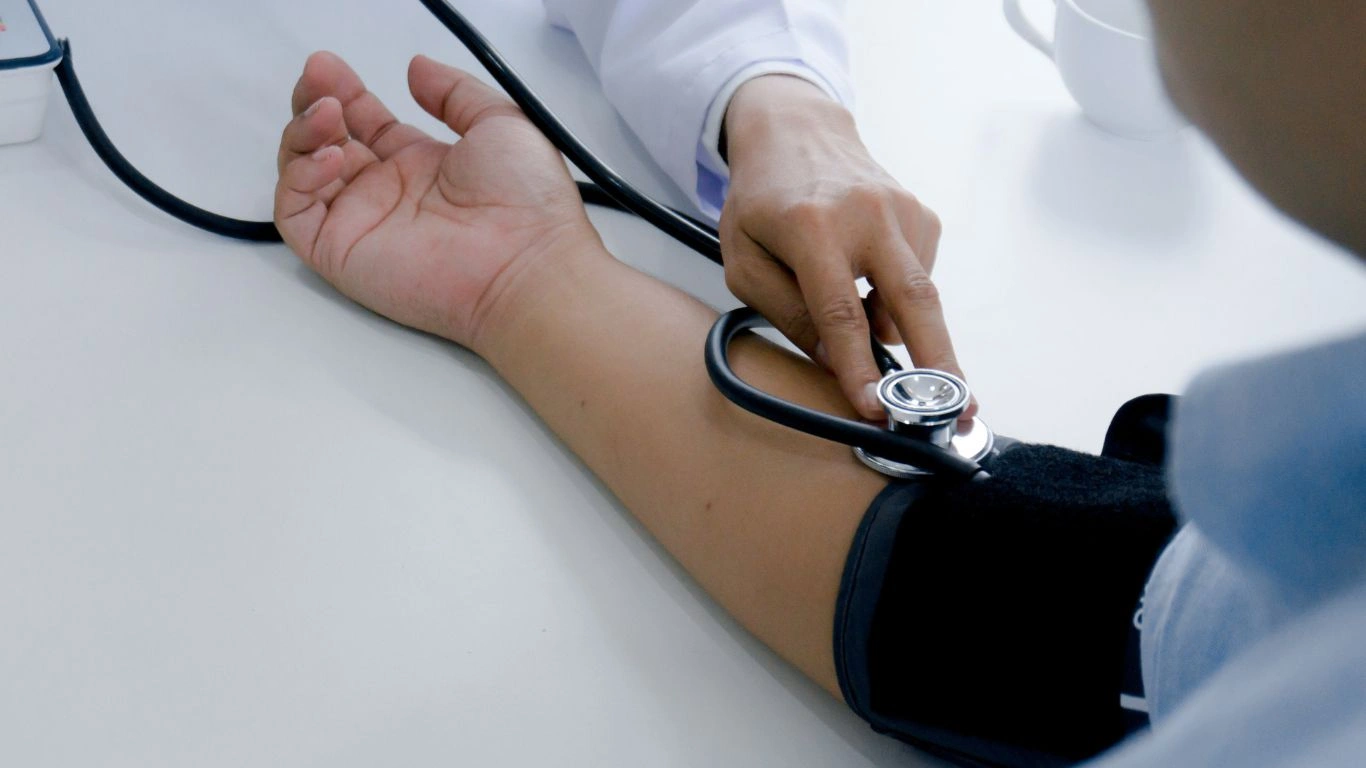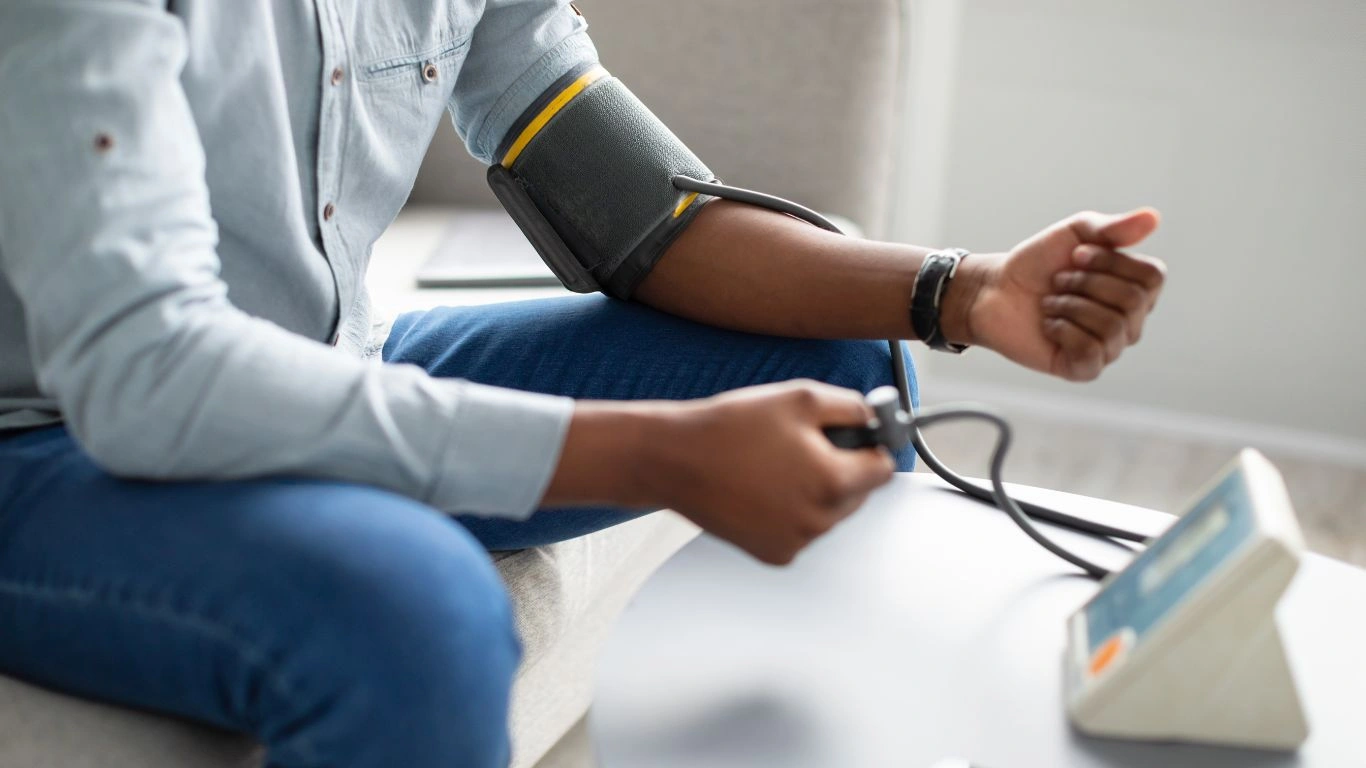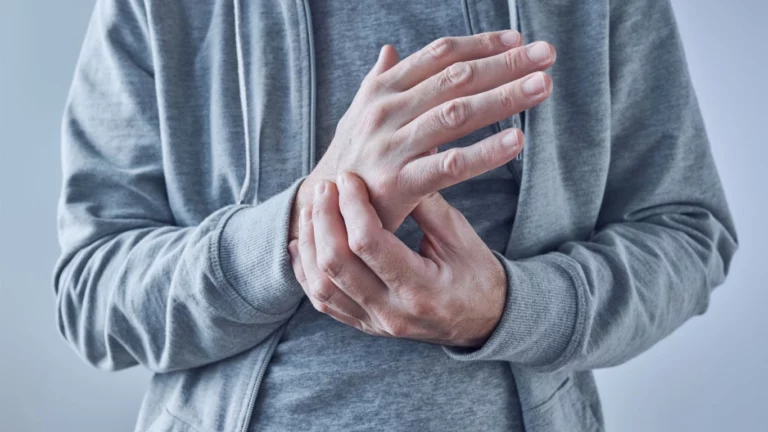7 Powerful Ways to Use Reflexology for Blood Pressure Control
Managing high blood pressure can feel like a never-ending battle, right? As someone who has spent years helping patients navigate hypertension, I totally get it. Medications, diet changes, exercise—it’s a lot to keep up with! But what if I told you there’s another powerful tool you can add to your blood pressure management toolkit? Enter reflexology. Yes, you heard that right. Learning how to use reflexology for blood pressure management might just be the game-changer you didn’t know you needed. Let’s dive into the science, benefits, and how you can start using reflexology today!
What is Reflexology, and How Does It Work?
Reflexology isn’t just some trendy spa treatment—it’s an ancient healing practice rooted in traditional Chinese medicine. The idea is simple: different areas on your feet, hands, and ears correspond to various organs and systems in your body. By applying pressure to these specific points, you can stimulate blood circulation, relieve tension, and even help regulate blood pressure.
Now, I know what you’re thinking: “How can pressing on my feet lower my blood pressure?” The secret lies in the nervous system. When you stimulate reflex points, it triggers a relaxation response, helping to lower stress hormones and improve circulation—both crucial for keeping hypertension in check.
Reflexology and Blood Pressure: What Does Science Say?

As much as I love natural therapies, I also believe in science-backed approaches. And guess what? Reflexology has some promising research behind it when it comes to blood pressure control.
- Study #1: A 2016 study published in the Journal of Complementary Therapies in Medicine found that reflexology significantly reduced systolic and diastolic blood pressure in hypertensive patients after just a few sessions.
- Study #2: Another study in Evidence-Based Complementary and Alternative Medicine reported that foot reflexology helped improve heart rate variability—a key factor in managing stress-induced hypertension.
- Study #3: Researchers have also linked reflexology to lower cortisol levels, which helps reduce stress-related blood pressure spikes.
While reflexology shouldn’t replace your prescribed treatments, incorporating it into your routine can enhance your overall blood pressure management strategy.
Key Reflexology Points for Blood Pressure Control

So, where exactly should you be pressing to support healthy blood pressure levels? Here are the most important reflexology points:
1. The Solar Plexus Point
This is the ultimate relaxation point, located in the center of the foot (just below the ball). Applying pressure here helps calm the nervous system and lower stress-related blood pressure spikes.
2. Kidney and Adrenal Gland Points
Located in the middle of the foot arch, these points are crucial for balancing blood pressure by regulating fluid retention and stress hormones.
3. The Heart and Lung Points
These points are found on the upper foot near the toes. Massaging them can enhance circulation and support cardiovascular health.
4. The Big Toe Connection
Your big toe is linked to the head and brain. Stimulating this area can help regulate nervous system function and prevent sudden blood pressure fluctuations.
Want to try it out? Just apply firm yet gentle pressure using your thumb for 30-60 seconds on each point, breathing deeply as you go.
Does Reflexology Work Instantly?
Many people feel an immediate sense of relaxation after a reflexology session, but when it comes to blood pressure management, consistency is key. You wouldn’t expect a single gym session to transform your body, right? The same goes for reflexology—it works best as a regular practice. I usually recommend my patients try it at least 3-4 times a week and track their blood pressure changes over time.
In Part 2, we’ll dive deeper into DIY reflexology techniques, how to create a relaxing reflexology routine, and when to seek a professional reflexologist. Stay tuned!
How to Perform Reflexology at Home for Blood Pressure Management

Now that you know which reflex points can help lower blood pressure, let’s talk about how to actually use reflexology in your daily routine. The great thing? You don’t need any fancy equipment or prior experience to get started. Just your hands, a quiet space, and a few minutes of your time.
1. Set the Mood
Before you begin, create a relaxing environment. Dim the lights, play some soft music, or even light a candle. This isn’t just about reflexology—it’s about reducing stress, which is a major trigger for high blood pressure.
2. Find a Comfortable Position
Either sit in a chair with your feet propped up or lie down. The goal is to be completely at ease so you can focus on the pressure points without tensing up.
3. Warm Up Your Hands and Feet
Before diving into the pressure points, massage your feet for a minute or two. This increases circulation and makes the reflexology session more effective. You can also rub your hands together to generate warmth before applying pressure.
4. Apply Gentle Yet Firm Pressure
Using your thumb or index finger, press on each reflexology point (like the solar plexus, kidney, and heart points) for about 30-60 seconds. Move in small, circular motions and breathe deeply as you go.
5. Use Essential Oils for Extra Benefits
Want to take your reflexology session up a notch? Try using essential oils like lavender (for relaxation) or peppermint (to improve circulation). Just mix a drop or two with a carrier oil and massage into your feet before applying pressure.
Trust me, this isn’t just some woo-woo wellness trick. I’ve had patients who swear by this routine, reporting noticeable drops in their blood pressure readings over time.
How Often Should You Do Reflexology?
One of the most common questions I get is, “How often should I do reflexology for blood pressure control?” The answer depends on your body’s response, but here’s a good starting point:
- For general relaxation and stress management: 2-3 times per week
- For targeted blood pressure reduction: 4-5 times per week
- If you’re experiencing high blood pressure spikes: A short 5-10 minute session daily
Consistency is the key here. Reflexology works best as a complementary therapy, not a one-time fix.
When to See a Professional Reflexologist

While DIY reflexology is effective, sometimes you need a pro to take things to the next level. If you’re dealing with stubborn hypertension or want a deeper, more therapeutic experience, consider visiting a certified reflexologist.
How to Choose the Right Reflexologist
Not all reflexologists are created equal, so here are some tips for finding a skilled professional:
- Check Their Credentials: Look for someone certified by a reputable reflexology association.
- Read Reviews: A quick Google search or asking for recommendations can help you find highly rated practitioners.
- Ask About Experience: Make sure they have experience working with clients who have hypertension.
- Schedule a Consultation: Before committing, have a chat to see if their approach aligns with your needs.
A trained reflexologist can apply deeper, more precise pressure to reflex points, which may lead to faster results in lowering blood pressure.
Final Thoughts: Reflexology as Part of a Holistic Hypertension Plan
By now, you’ve seen how reflexology can be a powerful tool in your blood pressure management toolkit. But let’s be real—this isn’t a magic bullet. The best results come from pairing reflexology with other healthy habits like:
- Maintaining a heart-healthy diet (think leafy greens, berries, and omega-3s!)
- Staying physically active—walking, yoga, or even dancing counts!
- Managing stress through meditation, deep breathing, or journaling
- Keeping up with prescribed medications if your doctor has recommended them
Think of reflexology as your secret weapon—an additional layer of support in your fight against high blood pressure. And the best part? It feels amazing. Whether you try it at home or book a professional session, your body (and your blood pressure) will thank you.
Stay consistent, listen to your body, and let reflexology be your ally in better health. You’ve got this!
Case Studies & Real-Life Examples

Now, let’s move beyond theory and dive into real-life experiences. Reflexology for blood pressure management isn’t just a concept—it has worked for real people. Here are some inspiring stories from individuals who have incorporated reflexology into their hypertension care plan.
Case Study #1: Lisa’s Journey to Lower Blood Pressure Naturally
Lisa, a 52-year-old teacher, had been struggling with high blood pressure for years. Despite medication, her readings hovered around 145/90 mmHg. She decided to give reflexology a try after a friend recommended it.
She started with 15-minute reflexology sessions three times a week, focusing on her kidney and adrenal gland reflex points. Within six weeks, her blood pressure dropped to 128/82 mmHg. She also reported feeling less anxious, more energetic, and sleeping better. Her doctor was impressed, and Lisa has since made reflexology a part of her long-term wellness routine.
Case Study #2: Mark’s Stress-Induced Hypertension Solution
Mark, a 40-year-old financial analyst, had stress-induced hypertension. Long work hours and constant deadlines kept his blood pressure fluctuating between 150/95 mmHg and 160/100 mmHg. He knew stress management was key but found it hard to stick to meditation or deep breathing exercises.
After consulting with a reflexologist, he began regular sessions twice a week, focusing on the solar plexus and heart reflex points. Combined with moderate exercise and dietary improvements, his blood pressure normalized to 130/85 mmHg within three months. Mark describes reflexology as his “go-to stress relief tool” and still uses it during high-pressure work weeks.
Case Study #3: Reflexology for Medication Side Effect Management
Susan, a 65-year-old retiree, had been on blood pressure medication for over a decade. While effective, the meds left her feeling sluggish and occasionally dizzy. She was curious if reflexology could help with these side effects.
After incorporating reflexology into her routine (focusing on circulation and nervous system points), she noticed an improvement in her energy levels. Her dizziness episodes also decreased significantly. While she still takes her medication as prescribed, she now feels more balanced and in control of her health.
Key Takeaways: What You Need to Remember
At this point, you’ve got a solid understanding of how to use reflexology for blood pressure management. Let’s break it down into key takeaways:
- Reflexology is a science-backed, holistic approach that can complement traditional hypertension treatments.
- Key reflex points (like the kidney, adrenal, heart, and solar plexus points) play a major role in blood pressure regulation.
- Consistency is key—aim for 3-5 sessions per week for best results.
- DIY reflexology works, but professional reflexologists can enhance the benefits.
- It’s not a standalone cure, but when paired with a healthy lifestyle, it can be a game-changer.
If you’ve been feeling stuck in your blood pressure management journey, why not give reflexology a try? You have nothing to lose—except maybe a few stress-induced BP spikes!
FAQs
Q1: How long does it take for reflexology to lower blood pressure?
It depends on the individual. Some people notice immediate relaxation, while others see consistent improvements over several weeks of regular practice.
Q2: Can reflexology replace blood pressure medication?
No, reflexology should complement, not replace, prescribed treatments. Always consult your doctor before making changes to your medication.
Q3: Is reflexology safe for people with severe hypertension?
Yes, but if you have severe hypertension (above 180/120 mmHg), check with your doctor before starting any complementary therapy.
Q4: Can I do reflexology if I have foot pain or diabetes?
If you have conditions like neuropathy or foot sensitivity, be gentle with pressure or consult a professional reflexologist.
Q5: How do I know if reflexology is working for me?
Track your blood pressure readings before and after sessions. Also, pay attention to how you feel—better sleep, reduced stress, and improved circulation are great signs!
Bonus: Additional Resources or DIY Tips
Looking for more ways to boost your results? Here are some additional resources to explore:
- Guided Reflexology Videos: YouTube has excellent tutorials for beginners.
- Recommended Books: The Reflexology Bible by Louise Keet offers an in-depth guide on reflexology techniques.
- Professional Directories: Find a certified reflexologist near you through the American Reflexology Certification Board (ARCB).
- Pair Reflexology with Other Natural Approaches: Try it alongside meditation, deep breathing, or aromatherapy for maximum impact.
Appendix: Table, References, and Call to Action
| Reflexology Point | Location | Benefit |
|---|---|---|
| Solar Plexus Point | Center of foot, below the ball | Reduces stress, calms the nervous system |
| Kidney Point | Middle of the foot arch | Regulates fluid retention and stress hormones |
| Heart Reflex Point | Upper foot near the toes | Improves circulation, supports heart function |
| Big Toe (Brain Connection) | Big toe | Regulates nervous system, prevents BP fluctuations |
References
Disclaimer
The information provided in this article is for educational purposes only and should not be considered medical advice. Always consult with a healthcare professional before starting any new therapy.
Final Thoughts & Call to Action
So, what’s the verdict? Reflexology is a gentle, effective way to support your blood pressure management—no pills, no side effects, just simple pressure techniques you can do anytime, anywhere.
If you’re serious about taking control of your health, why not give it a shot? Start small, be consistent, and track your progress. And if you’ve already tried reflexology, I’d love to hear about your experience! Drop a comment below or share your journey.
Your health is in your hands—literally. Ready to start?

Dr. Gwenna Aazee is a board-certified Internal Medicine Physician with a special focus on hypertension management, chronic disease prevention, and patient education. With years of experience in both clinical practice and medical writing, she’s passionate about turning evidence-based medicine into accessible, actionable advice. Through her work at Healthusias.com, Dr. Aazee empowers readers to take charge of their health with confidence and clarity. Off the clock, she enjoys deep dives into nutrition research, long walks with her rescue pup, and simplifying medical jargon one article at a time.






